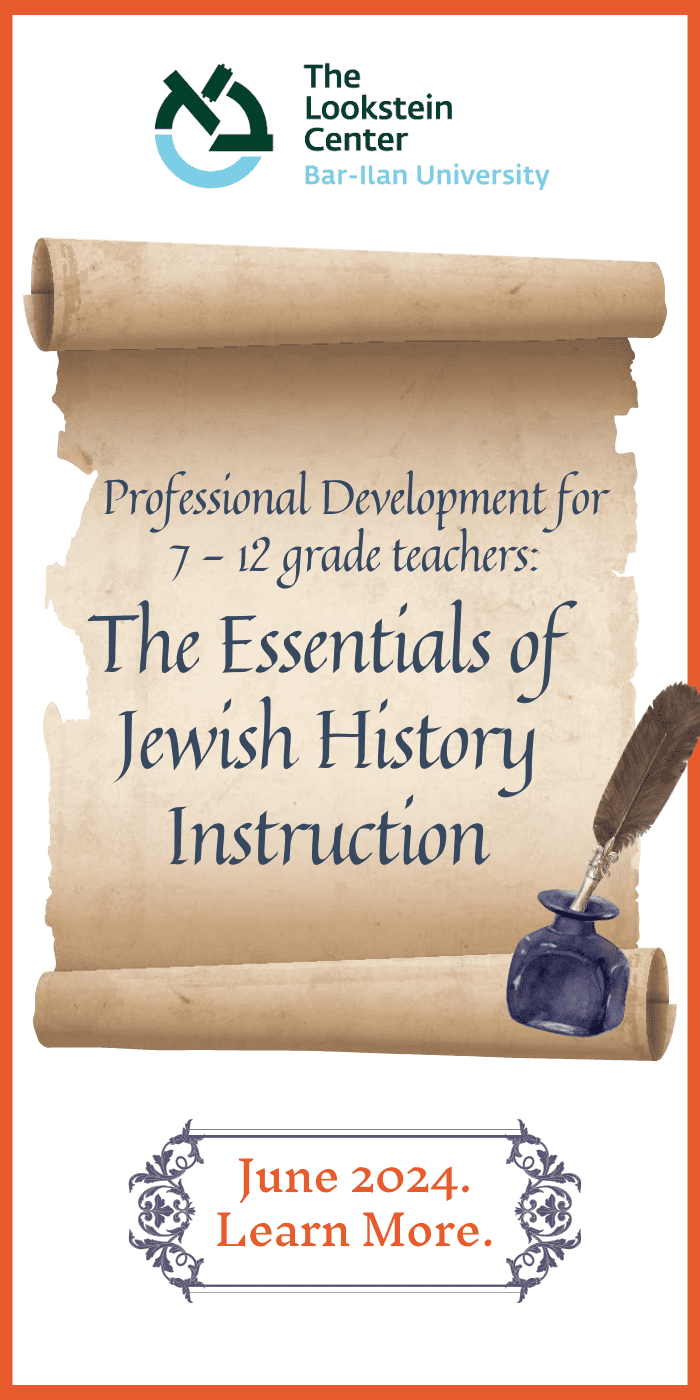Tackling Talmud
“Wait, What?!” Teaching Jewish Law in a Reform Jewish School
Fascinating. Infuriating. Uplifting. Complex. Boring. Inconsistent. Logical. Brilliant. Eclectic. Irrelevant. Compelling. Frustrating. Inspiring. Ancient. Contemporary.
The Talmud evokes all the above, and more. I vividly remember my first encounter with Gemara. I must have been ten years old, and my family was in a bungalow colony in the Catskills. Rabbi Cohen taught Gemara to the older boys, of which I was not, but I asked permission to sit in and listen. I loved following the discussions and debates, even though I couldn’t read any of it and retained none of the content.
The enjoyment of following the discussion intensified as I entered my high school years and beyond, as I was treated to intensely complex analyses with seemingly impossible logical twists, yet I was plagued by a small voice that told me that something wasn’t right. I could follow but I had no sense of how to do it on my own. Later, when I began charting my own path in learning and then teaching Gemara, I found that there were lines of reasoning that I just couldn’t explain to my students without feeling that I was faking, even as I accepted and embraced the core tenets—that learning Gemara provided a foundation for understanding the halakhic process, that it was the source of Jewish thought, the DNA of Judaism, the repository of Jewish wisdom, the foundation of Jewish life as we know it, and the secret to Jewish genius.
It is hard to imagine any work of literature that has been as loved and reviled, embraced and rejected, respected and rebuffed, and that has received so much scholarly and religious attention as the Talmud. Once reserved for study by elite scholars it has been translated, simplified, annotated, and popularized to make it accessible to the masses. It is the centerpiece of life for both the Yeshiva and Hasidic worlds. In Israel, it functions as the core of the haredi lifestyle even as it remains the most hated subject studied in schools for five decades. Around the world, thousands of Jewish educators try to teach it to their students despite multiple challenges it poses: it is in a foreign language, written in idiosyncratic shorthand and without punctuation, its flow frequently interrupted with tangents, it bounces back and forth almost without warning over a literature spanning a thousand years or more, it is filled with inconsistencies and internal contradictions, and all that is before we enter the ever-expanding world of commentary.
This raises multiple critical questions. Was it intended to be studied by the masses? Can it be taught to schoolchildren? To all schoolchildren? Should it be included in day school curricula, and if yes, then why? Is the investment of precious time justified, especially given that many will simply not get it? What do we want our students to get out of the encounter and how do we ensure that they do?
Some of these are uncomfortable questions. Throughout the years I have shared with others—in informal discussions, in staff meetings, as a mentor—the questions with which I struggle myself; I’ve heard the range of their answers and seen some getting uncomfortable as I pushed back. And that is why we chose to dedicate this issue of the journal to discuss those questions—because we can't possibly accomplish our goals if we haven't articulated them clearly to ourselves, not to mention to our students.
Some of the articles here describe the joy of studying Talmud, others break down the complex processes to make it more accessible to students or to enable the students to engage with it meaningfully. And just to make sure that we covered the bases of both the how and the why, we asked our authors to weigh in separately on the question: “Why do you think that day school students should be learning Gemara/Rabbinics?” Their responses—representing a very wide range of ideas—appear as an independent discussion starter. We invite you to join that discussion, to read and learn from what others are saying and doing, and to offer your contribution. Let us all decide to do this better.





